Roofing Companies Canal Winchester
Top 10 Roofers in Canal Winchester
Get 3 FREE Roofing Service quotes for your project today! Compare profiles, reviews, accreditations, portfolio, etc... and choose the best deal.

Gavelle Building Company
2430 Woodfox Dr., Toledo, 43611, USFull Service Contractor Based in Toledo, Ohio We're the experts you can count on. We’re not just contractors; we’re partners. We’ll work with you every step of the way to ensure that your project is completed to your exact specifications and on time and within budget. Request your free estimate now! Free Estimate Roofing Windows Siding Flooring Remodels Additions More Our Mission Where Vision Meets Precision, and Excellence is Built. At Gavelle Building Company, our mission is to redefine excellence in construction by delivering full-service solutions that transcend industry standards. Committed to quality craftsmanship, innovation, and client satisfaction, we strive to be the premier choice for those seeking a partner to bring their visions to life. With a foundation built on integrity, professionalism, and a passion for exceeding expectations, we are dedicated to creating enduring spaces that inspire and endure. Learn More Our Services 01 Roofing Learn More Roofing Services Our seasoned team of skilled professionals is dedicated to delivering top-tier roofing solutions tailored to meet your specific needs. Whether you require roof repairs, replacements, or new installations, we pride ourselves on utilizing high-quality materials and industry-leading techniques. With a commitment to precision and customer satisfaction, our roofing services ensure the protection and longevity of your property. Trust us to elevate your roofing experience to new heights, providing reliable and resilient solutions that stand the test of time. Choose our roofing services for a secure and stylish shelter that exceeds expectations. Call 567 868 2355 For a Free Estimate! Check out our Recent Projects 02 Windows Learn More Window Installation Elevate your property with our efficient and stylish window installation services. Our expert team specializes in precise and high-quality installations, using top-notch materials for enhanced energy efficiency and aesthetic appeal. Whether upgrading for curb appeal or energy efficiency, trust us for seamless installations that blend functionality with a touch of elegance. Transform your space with our reliable and expert window installation services, combining durability and style for lasting impact. Choose us for a swift and superior window upgrade experience. Call 567 868 2355 For a Free Estimate! Check out our Recent Projects 03 Siding Learn More Siding Services Discover excellence in siding services with our dedicated team of professionals.
- Services
- Why Us?
- Our Team
- Gallery
Get Quote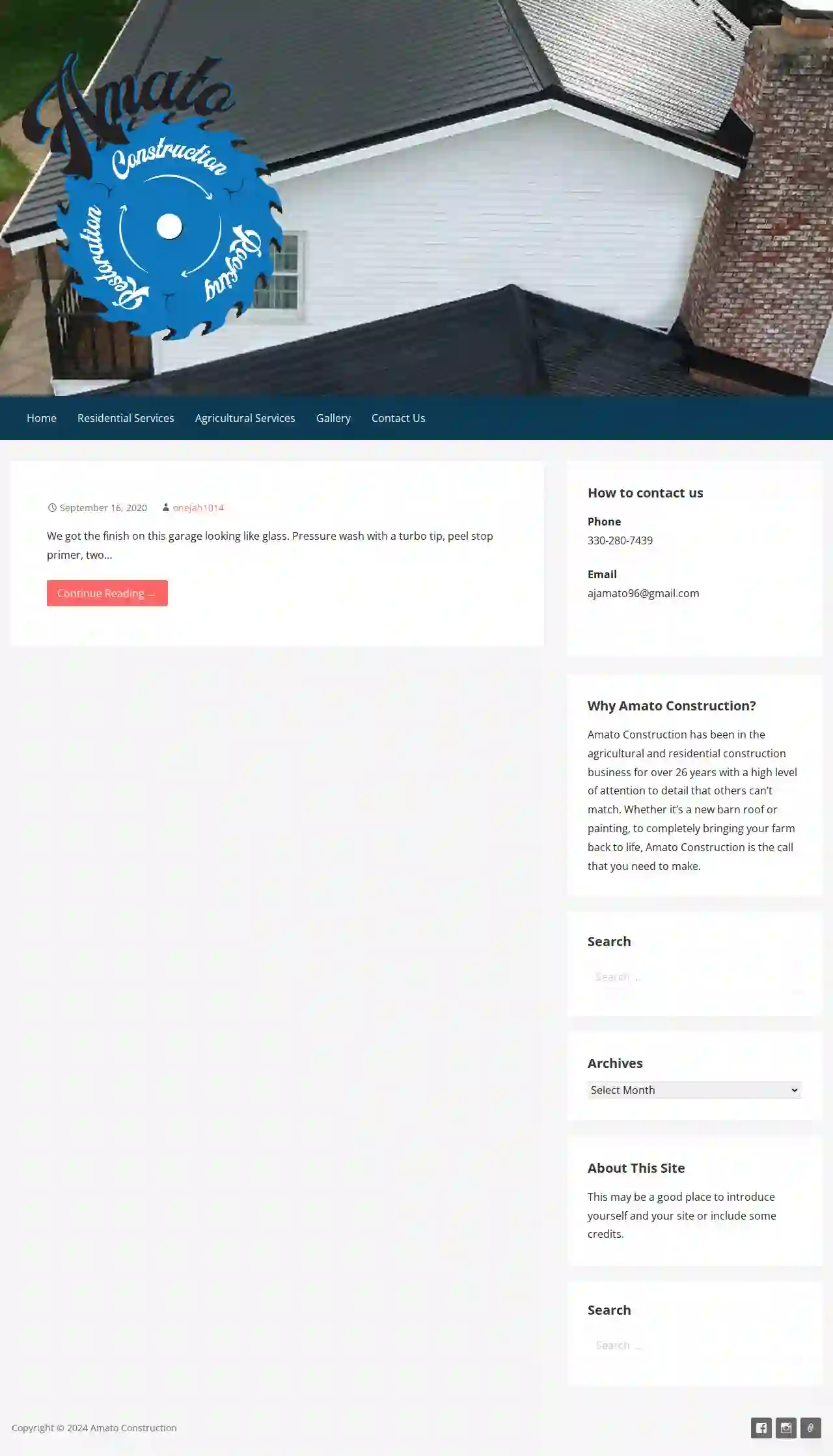
Amato Construction
Canton, USAmato Construction has been in the agricultural and residential construction business for over 26 years with a high level of attention to detail that others can’t match. Whether it’s a new barn roof or painting, to completely bringing your farm back to life, Amato Construction is the call that you need to make.
- Services
- Why Us?
- Gallery
Get Quote
Thousand Oaks Roofing Pros
Thousand Oaks, USThousand Oaks Roofing is a professional team of roofing contractors that have been in business for years. We began this company on simple principles: quality service and excellent customer service. Since then, we’ve stayed true to our morals. If you’re looking for Thousand Oaks, CA, roofing contractors, you’ve found the best. When you need it done right, give us a call.Roofing in Thousand Oaks can seem like a challenging task. As a roofing company with a proven track record, let us do the work for you. Our crew of professionals can lift the burden off your shoulders to see your project through from start to finish.Give us a call today, because we’ve got the skills and experience to make your project effortless. If you’re looking for Thousand Oaks roofing, we have years of roofing experience building roofs in the local area. We know exactly how to weatherproof your roof for our area’s specific seasonal patterns. With decades of experience, we offer the best quality roofing Thousand Oaks has to offer. If you’re outside Thousand Oaks, no worries – we do more than just roofing in the city limits. Whether you need a roof in the city or in its surrounding area, we’ve got the team for you. Get in touch with us today, because you deserve a simple and efficient roofing solution.
- Services
- Why Us?
- Gallery
Get Quote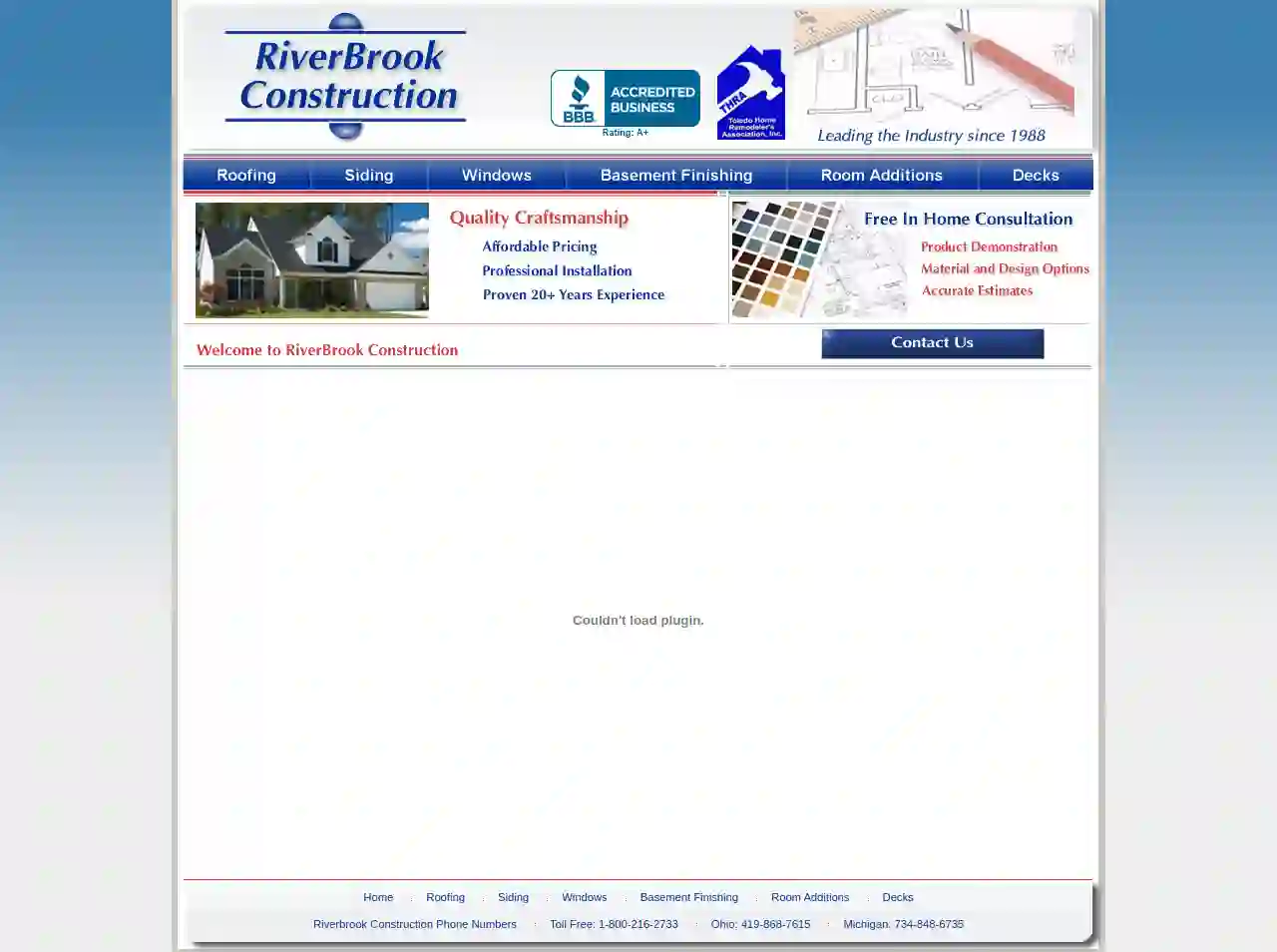
RiverBrook Construction
2.920 reviewsToledo, USRiverBrook Construction has been serving the Toledo area for over 25 years. We are a family owned and operated business dedicated to providing quality craftsmanship and exceptional customer service. We specialize in a variety of home improvement projects, including room additions, decks, sunrooms, patio enclosures, roofing, siding, windows, and basement finishing. Our team of experienced professionals is committed to working closely with you to understand your needs and bring your vision to life. We pride ourselves on our attention to detail, our commitment to using high-quality materials, and our ability to deliver projects on time and within budget.
- Services
- Why Us?
- Gallery
Get Quote
TZ Roofing
4031 Colonel Glenn Highway, Beavercreek, 45431, USTeezy Roofing Siding & Restoration Ltd. is a full-service roofing company proudly serving Greater Dayton, Cincinnati, Columbus, Indianapolis and surrounding areas. We are dedicated to our homeowners, project managers, and building owners, and are quickly rising to the top of the residential and commercial roofing sector. We develop a distinct strategy for each and every project. TEEZY is firmly based on the values of commitment, vision, honesty, high standards of service, and treating everyone like a member of the family. Our mission is to always have our clients’ best interests in mind, and we base everything we do on these values. We understand that your home needs protection beyond the shingles, tile, or steel that is visible. For the entire roofing system to withstand wind, rain, snow, or sleet, it must be of the best quality. During severe weather, many sub standard products start to curl or blow off the roof entirely. We only use top-of-the-line products because of this. Teezy will make sure that you are not only having the best materials installed, but that you are also having a professional system built to specifically meet the needs of your property thanks to Teezy specialized roofing knowledge, high business ethics, and unwavering work quality and craftsmanship. The success of Teezy Roofing Siding & Restoration Ltd. cannot only be judged by the volume of new installations and repairs. The success of Teezy Roofing Siding & Restoration Ltd. depends on completing each job well and keeping every customer who has hired the company to work on their home or place of business satisfied. You are your neighbor and a member of the community, so it is important that you are pleased with the work you have done.
- Services
- Why Us?
- Accreditations
- Our Team
- Testimonials
- Gallery
Get Quote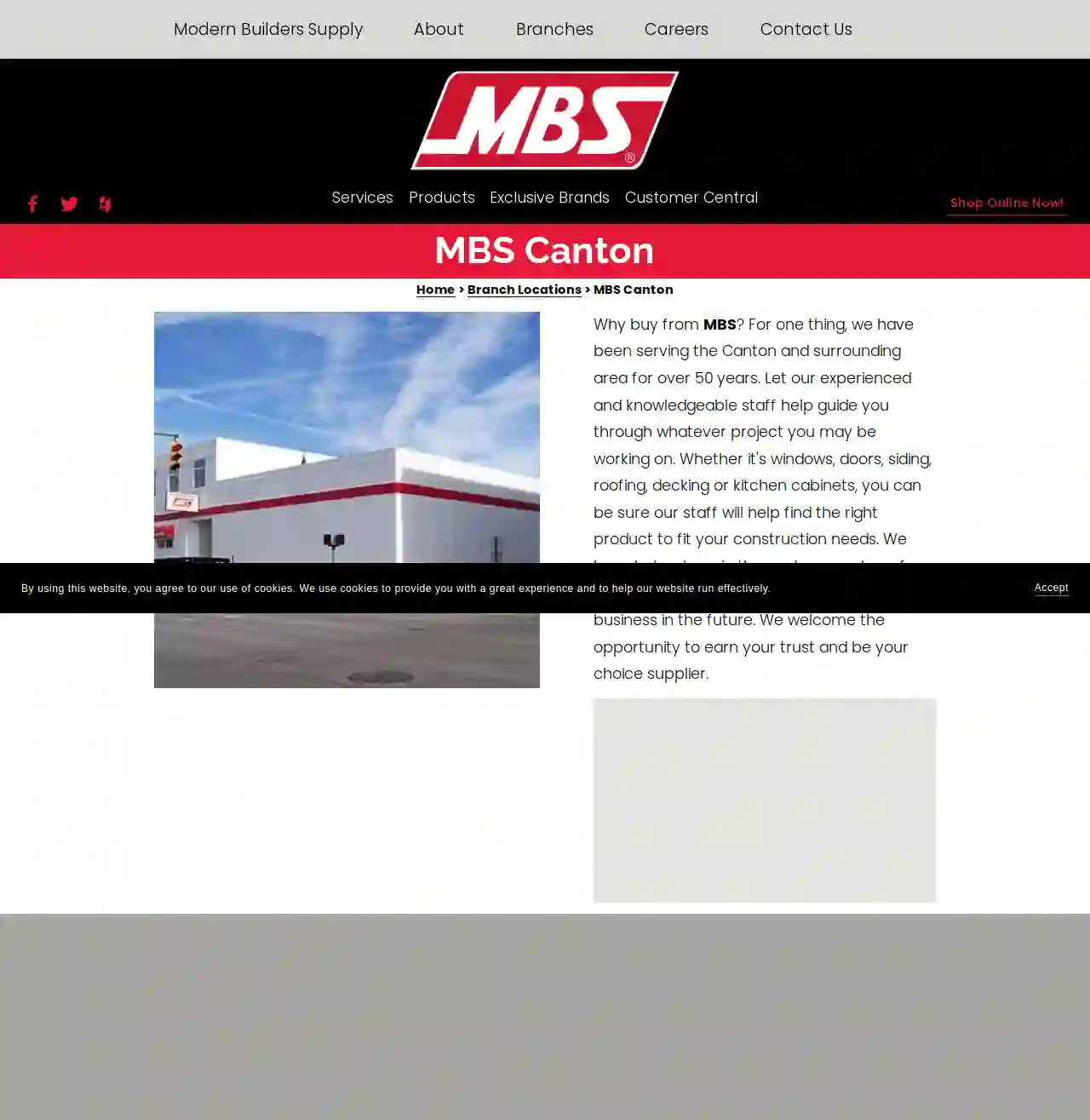
Modern Builders Supply, Inc. Canton Branch
4.937 reviews400 Cherry Ave., N.E., Canton, 44702, US- Services
- Why Us?
- Gallery
Get Quote
Thompson Roofing LLC
4.945 reviews75 Cavalier Blvd, Florence, 41042, USThompson Roofing LLC is a trusted roofing company serving Florence, KY and the surrounding areas. We are dedicated to providing high-quality roofing solutions for both residential and commercial clients. Our team of experienced roofers has the knowledge and expertise to handle all your roofing needs, from repairs and inspections to installations and replacements. We are committed to delivering exceptional customer service and ensuring your complete satisfaction. At Thompson Roofing LLC, we understand the importance of a strong and reliable roof. That's why we use only the highest quality materials and proven techniques to ensure your roof is protected from the elements. Whether you have a small leak or need a complete roof overhaul, we are here to help. Contact us today for a free estimate and let us take care of your roofing needs.
- Services
- Why Us?
- Accreditations
- Our Team
- Testimonials
- Gallery
Get Quote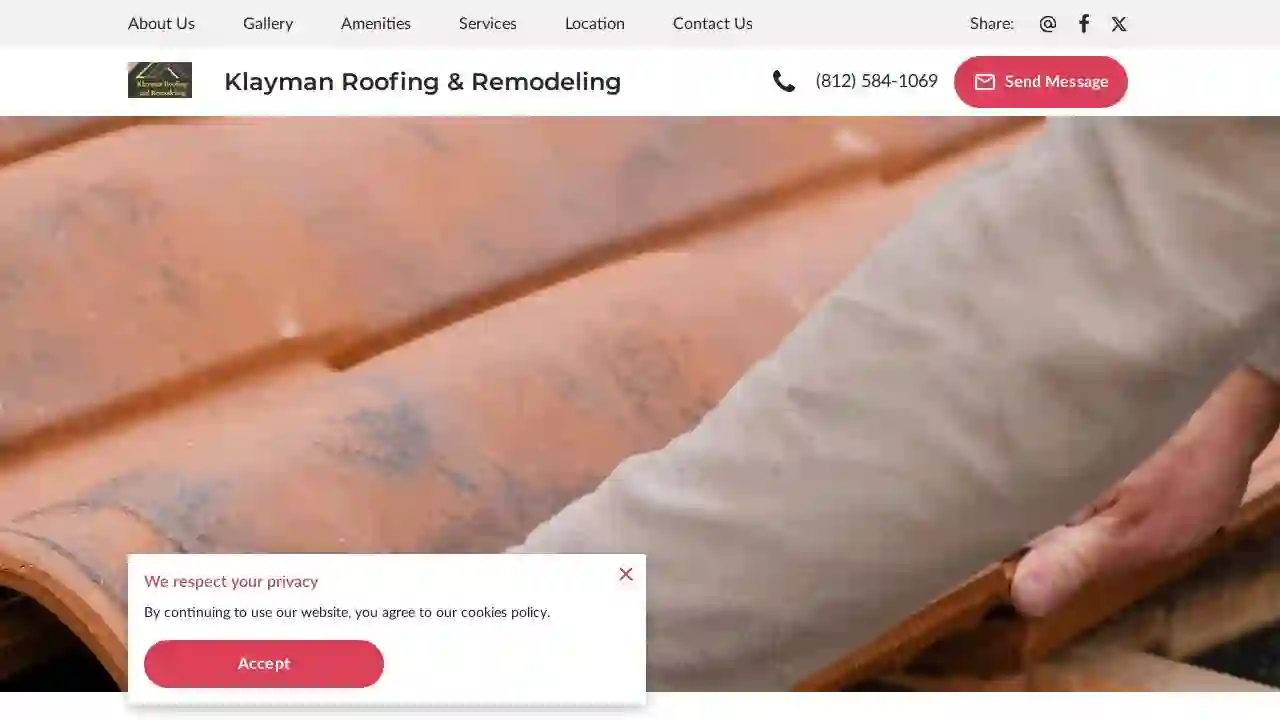
Klayman Roofing & Remodeling
4.746 reviews17586 Palmer Rd, Moores Hill, 47032, USKlayman Roofing & Remodeling is your trusted partner for all your home improvement needs in Moores Hill. Whether you require a minor repair or a complete roof replacement, our dedicated team of roofers is committed to delivering professional-quality workmanship and exceptional customer service. We understand that home improvement projects can be stressful, which is why we strive to make the process as smooth and hassle-free as possible. From initial consultation to project completion, we prioritize clear communication, transparent pricing, and meticulous attention to detail. Our experienced builders are skilled in a wide range of home improvement services, including roofing, power washing, exterior house painting, patio installation, and concrete driveway and sidewalk construction. We pride ourselves on our ability to deliver timely and efficient service without compromising on quality. At Klayman Roofing & Remodeling, we believe in building lasting relationships with our clients. We are committed to providing honest, professional services and exceeding your expectations. Contact us today for a free quote and let us help you transform your home into the space you've always dreamed of.
- Services
- Why Us?
- Gallery
Get Quote
The Durable Slate Company
523 reviews1000 Vine St, Suite 1000, Cincinnati, 45202, USThe Durable Slate Company is a nationally available historic roofing contractor specializing in slate, clay-tile, and copper roofing, as well as copper gutters. Their Cincinnati branch serves the entire Cincinnati region, as well as nearby Indiana and Kentucky. The company is committed to using historically traditional methods and keeping their products as historically accurate and aesthetic as possible. Alongside these traditional roofing techniques, they also specialize in the installation, restoration, and repair of copper gutters of all types, including custom styles. The Durable Slate Company's Cincinnati branch serves the entire tri-state area, as well as Indiana, Kentucky, Tennessee, and West Virginia.
- Services
- Why Us?
- Gallery
Get Quote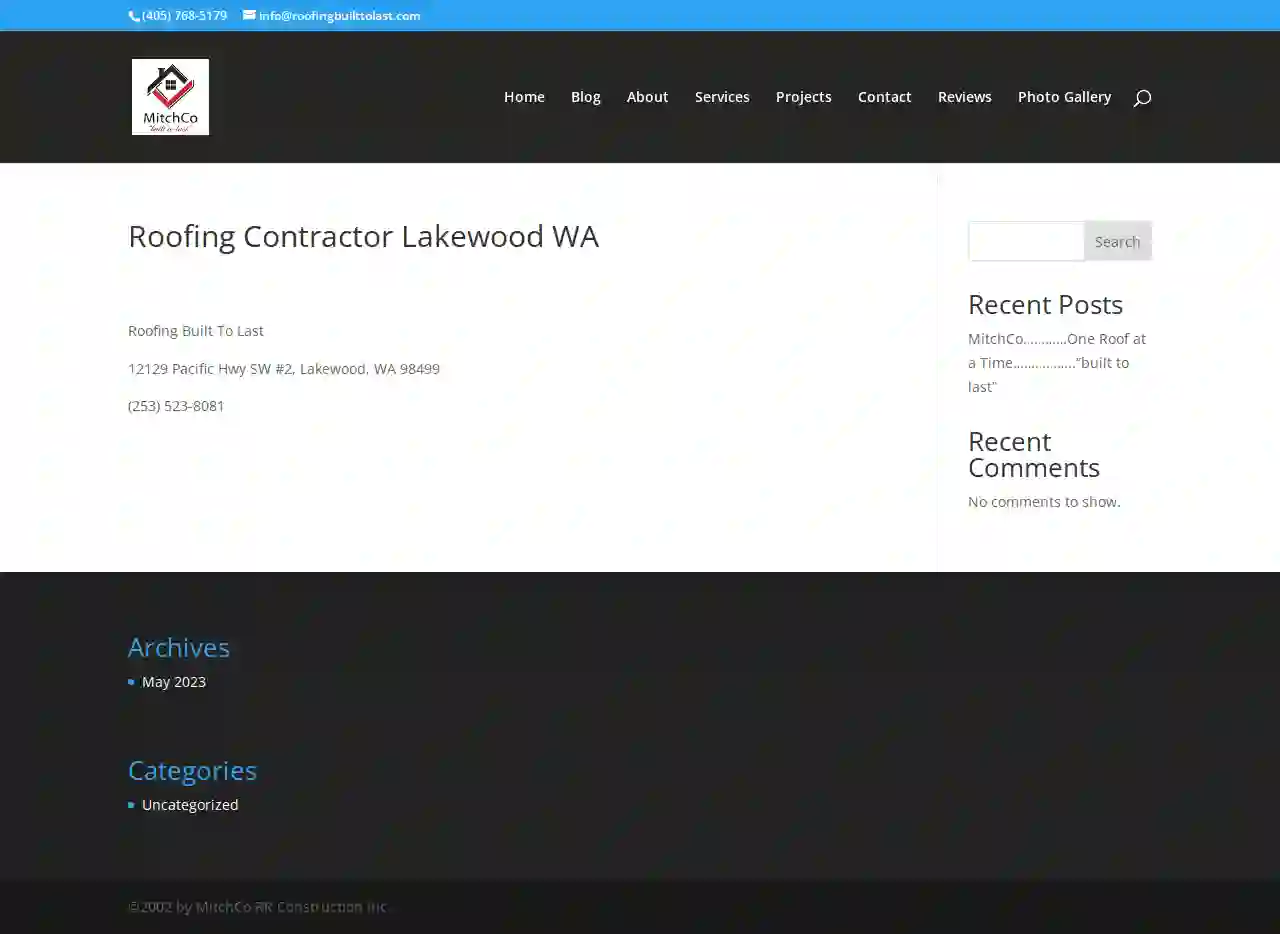
Roofing Built To Last
53 reviewsSuite 104B, 8001 S I-35 Service Rd, Oklahoma City, 73149, USMitchCo RR Construction Inc. is a leading Roofing Contractor who has served the Oklahoma City metro since 2002. With a passion for creating and a commitment to quality, MitchCo has built a reputation for delivering exceptional results. From roofing to remodeling, and from custom porches to door and window replacements, MitchCo's team of experts is dedicated to making your dreams a reality. With a lifetime warranty and a focus on energy efficiency, MitchCo is the trusted choice for homeowners seeking a reliable and skilled contractor.
- Services
- Why Us?
- Our Team
- Testimonials
- Gallery
Get Quote
Over 17,196+ Roofing Businesses on our platform
Our roofing contractors operate in Canal Winchester and surroundings!
Roofyng.com has curated and vetted the Best Roofers arround Canal Winchester. Find the most trustworthy business today.
Frequently Asked Questions About Roofing Companies
- Experience: 'How long have you been in business, and what experience do you have with my type of roof?'
- Licensing and insurance: 'Are you licensed and insured, and can I see proof of coverage?'
- Warranties: 'What warranties do you offer on your work and the materials used?'
- References: 'Can you provide references from past clients?'
- Project Timeline: 'What is the estimated timeline for completing the project?'
- Payment Terms: 'What are your payment terms, and do you require a deposit?'
- Communication: 'How will you keep me updated on the project's progress?'
- Cleanup: 'What steps will you take to protect my property during the project and ensure proper cleanup afterward?'
- Asphalt Shingles: 20-30 years
- Metal Roofing: 40-70 years
- Tile Roofing: 50-100 years or more (clay and slate)
- Flat Roofing: 15-30 years (depending on material)
- Slate: 100 years or more
- Wood Shakes or Shingles: 30-50 years (with proper maintenance)
What is a roof valley, and why is it important?
What questions should I ask a roofing contractor?
What is the difference between a roofer and a general contractor?
Roofer: Specializes in roof installations, repairs, and replacements. They have expertise in roofing materials, techniques, and safety practices specific to roofing.
General Contractor: Oversees and manages entire construction projects, including hiring and coordinating subcontractors, such as roofers, electricians, plumbers, etc. They handle overall project planning, scheduling, and budgeting.
For roofing projects, it's generally best to hire a roofing contractor who specializes in roof work.
How long does a roof typically last?
What is a roof valley, and why is it important?
What questions should I ask a roofing contractor?
- Experience: 'How long have you been in business, and what experience do you have with my type of roof?'
- Licensing and insurance: 'Are you licensed and insured, and can I see proof of coverage?'
- Warranties: 'What warranties do you offer on your work and the materials used?'
- References: 'Can you provide references from past clients?'
- Project Timeline: 'What is the estimated timeline for completing the project?'
- Payment Terms: 'What are your payment terms, and do you require a deposit?'
- Communication: 'How will you keep me updated on the project's progress?'
- Cleanup: 'What steps will you take to protect my property during the project and ensure proper cleanup afterward?'
What is the difference between a roofer and a general contractor?
Roofer: Specializes in roof installations, repairs, and replacements. They have expertise in roofing materials, techniques, and safety practices specific to roofing.
General Contractor: Oversees and manages entire construction projects, including hiring and coordinating subcontractors, such as roofers, electricians, plumbers, etc. They handle overall project planning, scheduling, and budgeting.
For roofing projects, it's generally best to hire a roofing contractor who specializes in roof work.
How long does a roof typically last?
- Asphalt Shingles: 20-30 years
- Metal Roofing: 40-70 years
- Tile Roofing: 50-100 years or more (clay and slate)
- Flat Roofing: 15-30 years (depending on material)
- Slate: 100 years or more
- Wood Shakes or Shingles: 30-50 years (with proper maintenance)